-
About
- About Listly
- Community & Support
- Howto
- Chrome Extension
- Bookmarklet
- WordPress Plugin
- Listly Premium
- Privacy
- Terms
- DMCA Copyright
- © 2010-2025 Boomy Labs


 Eva K
Eva K
Listly by Eva K
The definitive guide to user experience books, including books about user research, interaction design and UX strategy.
The list is organized by publication date, and is searchable by title and author.
Source: https://www.facebook.com/groups/uxbooks
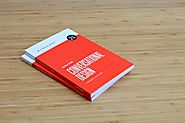
by Erika Hall
How do we make digital systems feel less robotic and more real? Whether you work with interface or visual design, front-end technology, or content design, learn why conversation is the best model for creating device-independent, human-centered systems. Research and information design expert Erika Hall explains what makes an interaction truly conversational and how to get more comfortable using language in design. From understanding the human interface, to effectively using the power of personality, to getting it all done, you’ll find out how the art of communication can elevate technology.
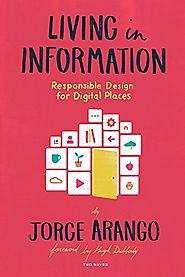
Responsible Design for Digital Places
by Jorge Arango
Websites and apps are places where critical parts of our lives happen. We shop, bank, learn, gossip, and select our leaders there. But many of these places weren’t intended to support these activities. Instead, they're designed to capture your attention and sell it to the highest bidder. Living in Information draws upon architecture as a way to design information environments that serve our humanity.
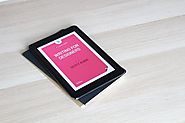
by Scott Kubie
From product documentation to menu labels to marketing emails, writing for the web can feel challenging—even insurmountable. But it doesn’t have to be that way! Whether you’re new to writing or looking to hone your skills, Scott Kubie’s guide will empower you to get organized and get going. Learn to scope and articulate writing assignments, build a repeatable workflow, and develop methods for productive editing, collaboration, version control, and delivery. Don't struggle with writing—get the writing done.
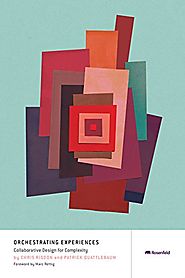
Collaborative Design for Complexity
By Chris Risdon and Patrick Quattlebaum
Customer experiences are increasingly complicated—with multiple channels, touchpoints, contexts, and moving parts—all delivered by fragmented organizations. How can you bring your ideas to life in the face of such complexity? Orchestrating Experiences is a practical guide for designers and everyone struggling to create products and services in complex environments.
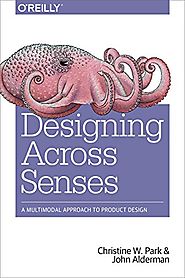
by Christine W. Park and John Alderman
Today we have the ability to connect speech, touch, haptic, and gestural interfaces into products that engage several human senses at once. This practical book explores examples from current designers and devices to describe how these products blend multiple interface modes together into a cohesive user experience.
Authors Christine Park and John Alderman explain the basic principles behind multimodal interaction and introduce the tools you need to root your design in the ways our senses shape experience. This book also includes guides on process, design, and deliverables to help your team get started.
The book covers several topics within multimodal design, including:
New Human Factors: learn how human sensory abilities allow us to interact with technology and the physical world
New Technologies: explore some of the technologies that enable multimodal interactions, products, and capabilities
Multimodal Products: examine different categories of products and learn how they deliver sensory-rich experiences
Multimodal Design: learn processes and methodologies for multimodal product design, development, and release
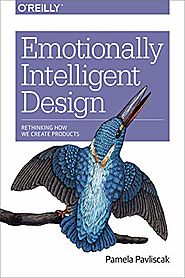
by Pamela Pavliscak
As technology becomes deeply integrated into every aspect of our lives, we’ve begun to expect more emotionally intelligent interactions. But smartphones don’t know if we’re having a bad day, and cars couldn’t care less about compassion. Technology is developing more IQ, but it still lacks EQ.
In this book, Pamela Pavliscak—design researcher and advisor to Fortune 500 companies—explores new research about emotion, new technology that engages emotion, and new emotional design practices. Drawing on her own research and the latest thinking in psychology, neuroscience, and behavioral economics, Pamela shows you how design can help promote emotional well-being.
You’ll learn:
How design has transformed emotion and how tech is transforming it again
New principles for merging emotional intelligence and design thinking
How to use a relationship model for framing product interactions and personality
Methods for blending well-being interventions with design patterns
How emotional resonance can guide designers toward ethical futures
Implications of emotionally intelligent technology as it scales from micro- to mega-emotional spheres

Sexist Apps, Biased Algorithms, and Other Threats of Toxic Tech
by Sara Wachter-Boettcher
A revealing look at how tech industry bias and blind spots get baked into digital products―and harm us all.
Buying groceries, tracking our health, finding a date: whatever we want to do, odds are that we can now do it online. But few of us ask why all these digital products are designed the way they are. It’s time we change that. Many of the services we rely on are full of oversights, biases, and downright ethical nightmares: Chatbots that harass women. Signup forms that fail anyone who’s not straight. Social media sites that send peppy messages about dead relatives. Algorithms that put more black people behind bars.
Sara Wachter-Boettcher takes an unflinching look at the values, processes, and assumptions that lead to these and other problems. Technically Wrong demystifies the tech industry, leaving those of us on the other side of the screen better prepared to make informed choices about the services we use―and demand more from the companies behind them.
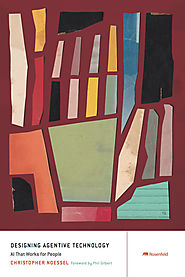
by Christopher Noessel
Advances in narrow artificial intelligence make possible agentive systems that do things directly for their users (like, say, an automatic pet feeder). They deliver on the promise of user-centered design, but present fresh challenges in understanding their unique promises and pitfalls. Designing Agentive Technology provides both a conceptual grounding and practical advice to unlock agentive technology’s massive potential.
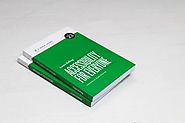
by Laura Kalbag
You make the web more inclusive for everyone, everywhere, when you design with accessibility in mind. Let Laura Kalbag guide you through the accessibility landscape: understand disability and impairment challenges; get a handle on important laws and guidelines; and learn how to plan for, evaluate, and test accessible design. Leverage tools and techniques like clear copywriting, well-structured IA, meaningful HTML, and thoughtful design, to create a solid set of best practices. Whether you’re new to the field or a seasoned pro, get sure footing on the path to designing with accessibility.
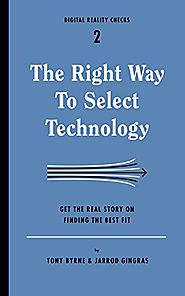
by Tony Byrne and Jarrod Gingras
Get the Real Story on Finding the Best Fit (Digital Reality Checks)
Why do half of all technology projects fail? A major reason is that organizations often pick the wrong tools, leaving them digitally hamstrung from the start. This book offers a modern alternative to traditional waterfall approaches to selecting technology. You’ll learn a practical, adaptive process that relies on realistic storytelling and hands-on testing to get the best fit for your enterprise.
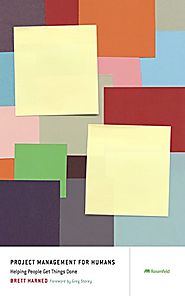
Helping People Get Things Done
by Brett Harned
Project management—it’s not just about following a template or using a tool, but rather developing personal skills and intuition to find a method that works for everyone. Whether you’re a designer or a manager, Project Management for Humans will help you estimate and plan tasks, scout and address issues before they become problems, and communicate with and hold people accountable.
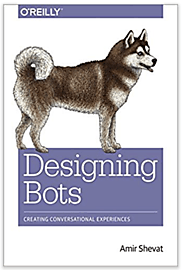
Creating Conversational Experiences
by Amir Shevat
From Facebook Messenger to Kik, and from Slack bots to Google Assistant, Amazon Alexa, and email bots, the new conversational apps are revolutionizing the way we interact with software. This practical guide shows you how to design and build great conversational experiences and delightful bots that help people be more productive, whether it’s for a new consumer service or an enterprise efficiency product.
Ideal for designers, product managers, and entrepreneurs, this book explores what works and what doesn’t in real-world bot examples, and provides practical design patterns for your bot-building toolbox. You’ll learn how to use an effective onboarding process, outline different flows, define a bot personality, and choose the right balance of rich control and text.
Explore different bot use-cases and design best practices
Understand bot anatomy—such as brand and personality, conversations, advanced UI controls—and their associated design patterns
Learn steps for building a Facebook Messenger consumer bot and a Slack business bot
Explore the lessons learned and shared experiences of designers and entrepreneurs who have built bots
Design and prototype your first bot, and experiment with user feedback

The Impact of Bad Product Design and How to Fix It
by Jonathan Shariat & Cynthia Savard Saucier
Bad design is everywhere, and its cost is much higher than we think. In this thought-provoking book, authors Jonathan Shariat and Cynthia Savard Saucier explain how poorly designed products can anger, sadden, exclude, and even kill people who use them. The designers responsible certainly didn’t intend harm, so what can you do to avoid making similar mistakes?
Tragic Design examines real case studies that show how certain design choices adversely affected users, and includes in-depth interviews with authorities in the design industry. Pick up this book and learn how you can be an agent of change in the design community and at your company.
You’ll explore:
Designs that can kill, including the bad interface that doomed a young cancer patient
Designs that anger, through impolite technology and dark patterns
How design can inadvertently cause emotional pain
Designs that exclude people through lack of accessibility, diversity, and justice
How to advocate for ethical design when it isn’t easy to do so
Tools and techniques that can help you avoid harmful design decisions
Inspiring professionals who use design to improve our world

by Emily Geisen, Jennifer Romano Bergstrom
Usability Testing for Survey Research provides researchers with a guide to the tools necessary to evaluate, test, and modify surveys in an iterative method during the survey pretesting process. It includes examples that apply usability to any type of survey during any stage of development, along with tactics on how to tailor usability testing to meet budget and scheduling constraints.
The book's authors distill their experience to provide tips on how usability testing can be applied to paper surveys, mixed-mode surveys, interviewer-administered tools, and additional products.
Readers will gain an understanding of usability and usability testing and why it is needed for survey research, along with guidance on how to design and conduct usability tests, analyze and report findings, ideas for how to tailor usability testing to meet budget and schedule constraints, and new knowledge on how to apply usability testing to other survey-related products, such as project websites and interviewer administered tools.
Explains how to design and conduct usability tests and analyze and report the findings
Includes examples on how to conduct usability testing on any type of survey, from a simple three-question survey on a mobile device, to a complex, multi-page establishment survey
Presents real-world examples from leading usability and survey professionals, including a diverse collection of case studies and considerations for using and combining other methods
Discusses the facilities, materials, and software needed for usability testing, including in-lab testing, remote testing, and eye tracking
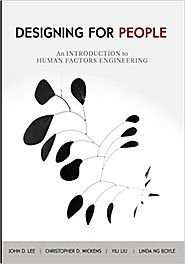
Whether it is the car you drive or the app on your smartphone, technology has an increasingly powerful influence on you. When designed with people in mind, this influence can improve lives and productivity. This book provides a broad introduction on how to attend to the needs, capabilities, and preferences of people in the design process. We combine methods of design thinking and systems thinking to understand people's needs and evaluate whether those needs are met. This book also provides a detailed description of the capabilities and limits of people—both mental and physical—and how these can guide the design of everything from typography to teams and from data visualization to habits. The book includes: • Over 70 design principles for displays, controls, human-computer interaction, automation, and workspace layout • Integrative discussion of the research and theory underlying these guidelines, supported by over 1,000 references • Examples of successful and unsuccessful designs and exercises that link principles and theory to applications in consumer products, the workplace, and high risk-systems We hope this book will give a useful introduction to students entering the field and will also serve as a reference for researchers, engineers, and designers.

Designing Agentive Technology: AI That Works for People by Christopher Noessel
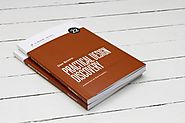
by Dan Brown
Design discovery is crucial to a project’s success—unite your team in an approach toward a common goal. Explore the role of discovery in product design, how to use and structure your favorite techniques for success, and how to synthesize and document what you learn. With Dan Brown’s flexible framework for planning and practicing discovery activities, you’ll set every design endeavor on the right path.
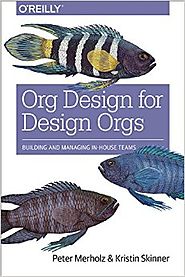
Org Design for Design Orgs: Building and Managing In-House Design Teams [Peter Merholz, Kristin Skinner] on Amazon.com. FREE shipping on qualifying offers.
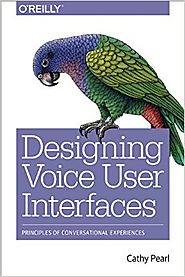
Designing Voice User Interfaces: Principles of Conversational Experiences [Cathy Pearl]

Doorbells, Danger, and Dead Batteries: User Research War Stories by Steve Portigal. Download it once and read it on your Kindle device, PC, phones or tablets. Use features like bookmarks, note taking and highlighting while reading Doorbells, Danger, and Dead Batteries.

Designing UX: Forms: Create Forms That Don't Drive Your Users Crazy (Aspects of Ux) [Jessica Enders]
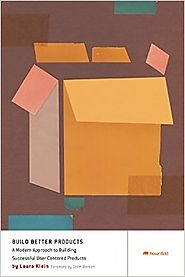
Build Better Products: A Modern Approach to Building Successful User-Centered Products Paperback – November 1, 2016 [Laura Klein, Kate Rutter]
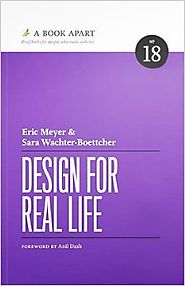
Design for Real Life by Eric Meyer & Sara Wachter-Boettcher - You can't always predict who will use your products, or what emotional state they'll be in when they do. But by identifying stress cases and designing with compassion, you'll create experiences that support more of your users, more of the time. Join Sara Wachter-Boettcher and Eric Meyer as they turn examples from more than a dozen sites and services into a set of principles you can apply right now. Whether you're a designer, developer, content strategist, or anyone who creates user experiences, you'll gain the practical knowledge to test where your designs might fail (before you ship!), vet new features or interactions against more realistic scenarios, and build a business case for making decisions through a lens of kindness. You can't know every user, but you can develop inclusive practices that support a wider range of people.
